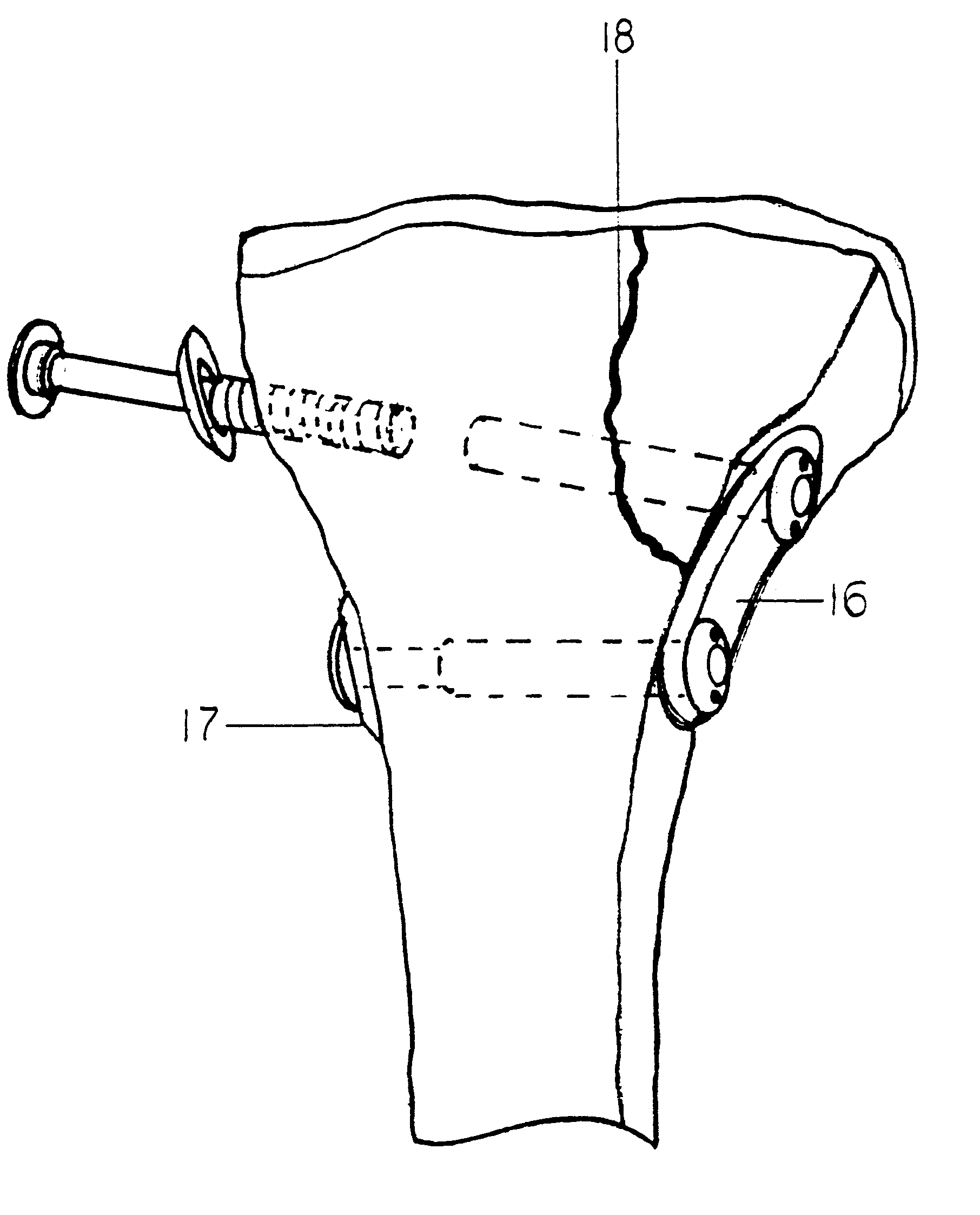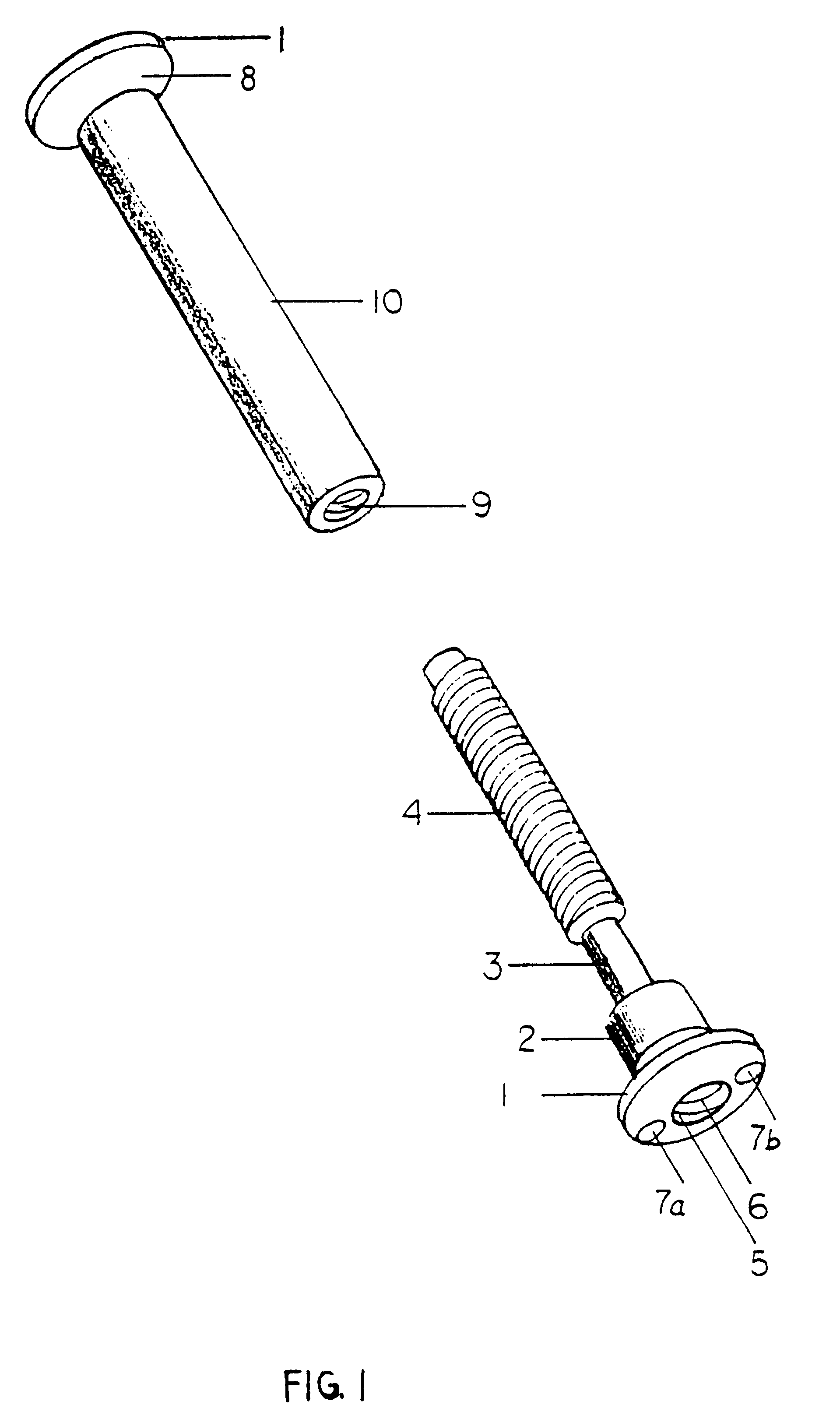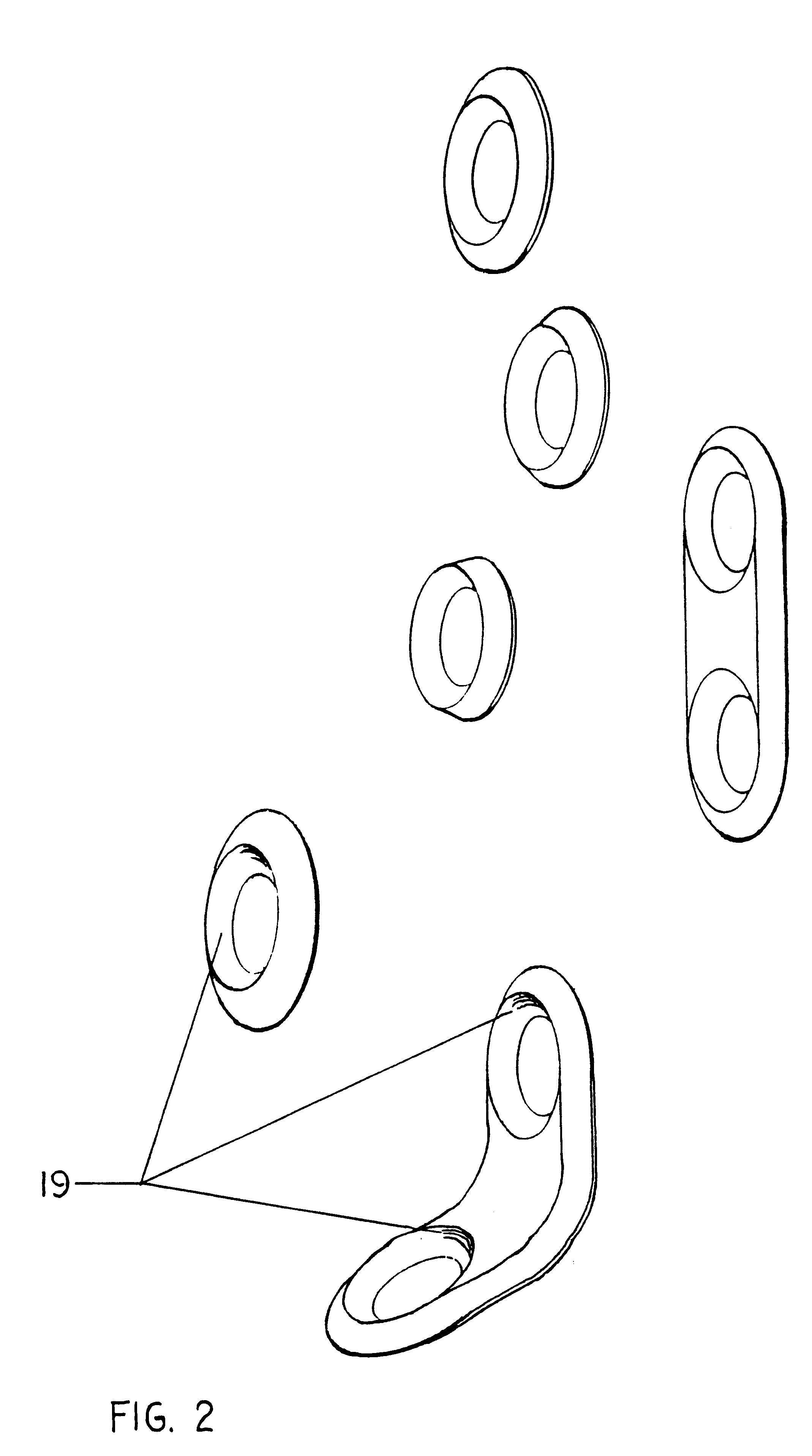Hardware for high strength fastening of bone
a high-strength, bone technology, applied in the field of surgical fastening hardware, can solve the problems of large force required to prevent excessive motion, affecting the stability of bone, so as to achieve the effect of enhancing strength, determining more accurately the fastening force, and high strength
- Summary
- Abstract
- Description
- Claims
- Application Information
AI Technical Summary
Benefits of technology
Problems solved by technology
Method used
Image
Examples
Embodiment Construction
The fastener of this invention, see FIG. 1, consists of a male member with a head 1, shoulder 2, glide shank 3, and threaded portion 4. A hole 6 of sufficient diameter runs clear through both male and female members (they are cannulated) allowing each member to fit over a guide wire. The head is designed to provide for firm attachment to a special insertion tool, FIG. 6. This rigid attachment provides for turning, pulling, pushing and levering of the fastener by the insertion tool. In the preferred embodiment, FIG. 1, the fastener head is internally threaded 5, to receive a threaded male drawtube 11 protruding from the special insertion tool (See FIG. 6). A knob 14 connects to the drawtube 11 providing for rotation thereof. Two pins 13a and 13b protrude from the partial cavity 12 of the installation tool, and these pins mate into two holes 7a and 7b in the head of the fastener. The drawtube pulls the fastener head snugly into the partial cavity (12) wherein it is secured. The shank ...
PUM
 Login to View More
Login to View More Abstract
Description
Claims
Application Information
 Login to View More
Login to View More - R&D
- Intellectual Property
- Life Sciences
- Materials
- Tech Scout
- Unparalleled Data Quality
- Higher Quality Content
- 60% Fewer Hallucinations
Browse by: Latest US Patents, China's latest patents, Technical Efficacy Thesaurus, Application Domain, Technology Topic, Popular Technical Reports.
© 2025 PatSnap. All rights reserved.Legal|Privacy policy|Modern Slavery Act Transparency Statement|Sitemap|About US| Contact US: help@patsnap.com



